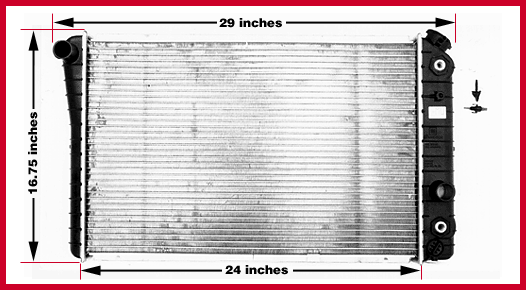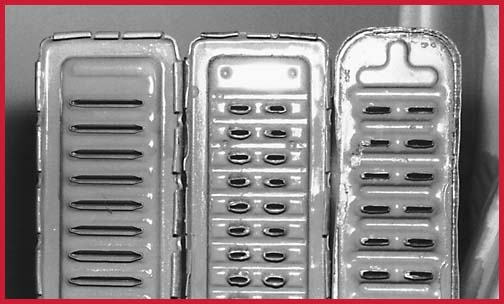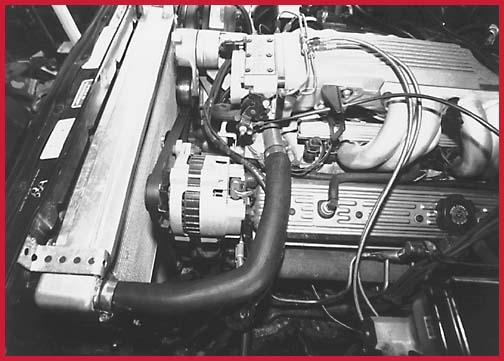|
After trying four different custom-built radiators, with varying degrees of
success, we found that the 1986-1988 Corvette heavy-duty radiator (GM Part #52453612,
Stealth Conversions Part #S10-120), shown above, is the best radiator for
cooling the V-8 S-Truck. The
cost from a Chevrolet dealership is about $250. Stealth Conversions offers
the same GM radiator for $200, including shipping.
The Corvette radiator is a plastic/aluminum
radiator, quite similar to the radiators used in 1987 and newer S-Trucks. It is
very light, weighing about 10 pounds, and its high-efficiency, aluminum core, cools extremely well. Be aware that aftermarket replacement
radiators may not work as well as an original GM radiator.
The aftermarket radiator offered by Stealth Conversions (Part #S10-123, $130 including shipping) is every bit as good
as the GM radiator.
A
thick radiator core will not cool a V-8 S-Truck very well, because it reduces
the available room for an engine-driven fan.
The Corvette radiator is only 1-1/4" thick, which gives over 1/2"
more clearance between the engine-driven fan and the radiator, when compared
to a 2" thick copper/brass core that many radiator shops build for the
V-8 S-Truck. 1/2" may not sound like much, but it makes a huge difference
in cooling effectiveness, because the fan blade can have more "pitch"
or "bite", which will dramatically increase air flow through the radiator.
The 1/2" gain in radiator/fan clearance assumes that you will hammer
in the radiator core-support so that the side tanks will be positioned far enough
forward so that the top of the radiator core is only 1/8" away from
the top of the radiator core support. Information on mounting the radiator and
radiator hoses is covered in detail in the S-10
Truck V-8 Conversion Manual.
Be careful when buying a non-GM "Corvette" replacement radiator, because
some of the after-market "replacement" radiators are not as good as the genuine
Corvette radiator available from the Chevrolet dealer. Stealth Conversions sells
a high-quality aftermarket
radiator that performs as well as the genuine Chevrolet radiator for about
$130. Stealth Conversions sells Genuine
Chevrolet Corvette radiators for about $200.
Radiator
Designs —
There are a lot of different radiator designs and
different materials: copper-brass, aluminum, one-row core, two-row core, continuous
fin, louvered fin, straight fin, serpentine fin, dimpled tube, cross flow, down
flow, high-efficiency core, one-pass core, two-pass core ... etc.
A lot
of the different designs have more to do with marketing than actual cooling ability. |



